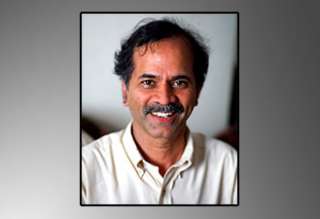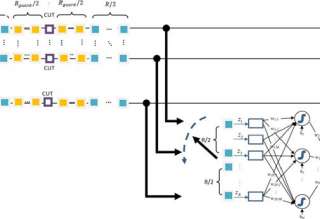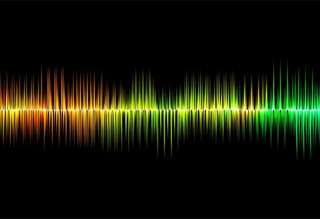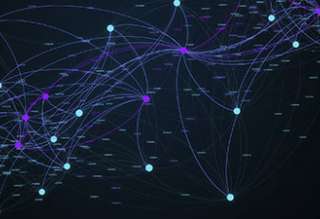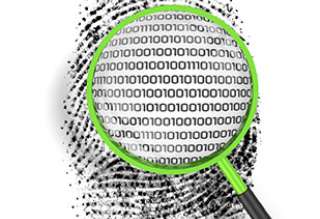- Our Story
- Publications & Resources
- Publications & Resources
- Publications
- IEEE Signal Processing Magazine
- IEEE Journal of Selected Topics in Signal Processing
- IEEE Signal Processing Letters
- IEEE Transactions on Computational Imaging
- IEEE Transactions on Image Processing
- IEEE Transactions on Information Forensics and Security
- IEEE Transactions on Multimedia
- IEEE Transactions on Signal and Information Processing over Networks
- IEEE Transactions on Signal Processing
- IEEE TCI
- IEEE TSIPN
- Data & Challenges
- Submit Manuscript
- Guidelines
- Information for Authors
- Special Issue Deadlines
- Overview Articles
- Top Accessed Articles
- SPS Newsletter
- SigPort
- SPS Resource Center
- Publications FAQ
- Blog
- News
- Dataset Papers
- Conferences & Events
- Community & Involvement
- Professional Development
- For Volunteers
- Information for Authors-OJSP
-
Home
Conferences Events IEEE Signal Processing Magazine IEEE SPL Article IEEE TIFS Article IEEE TMM Article IEEE TSP Article Jobs in Signal Processing Lectures Machine Learning Seasonal Schools Signal Processing News SPM Article SPS Distinguished Lectures SPS Newsletter Article SPS Webinar SPS Webinars SPS Webinar Series Webinar webinars
-
Our Story
What is Signal Processing?
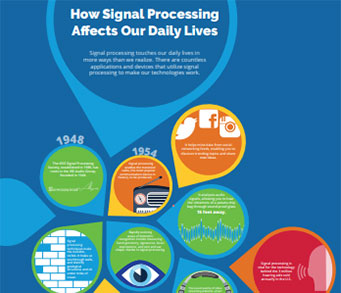
The technology we use, and even rely on, in our everyday lives –computers, radios, video, cell phones – is enabled by signal processing. Learn More » -
Publications & Resources
-
SPS Resources
- Signal Processing Magazine The premier publication of the society.
- SPS Newsletter Monthly updates in Signal Processing
- SPS Resource Center Online library of tutorials, lectures, and presentations.
- SigPort Online repository for reports, papers, and more.
- SPS Feed The latest news, events, and more from the world of Signal Processing.
-
SPS Resources
-
Conferences & Events
-
Community & Involvement
-
Membership
- Join SPS The IEEE Signal Processing Magazine, Conference, Discounts, Awards, Collaborations, and more!
- Chapter Locator Find your local chapter and connect with fellow industry professionals, academics and students
- Women in Signal Processing Networking and engagement opportunities for women across signal processing disciplines
- Students Scholarships, conference discounts, travel grants, SP Cup, VIP Cup, 5-MICC
- Young Professionals Career development opportunities, networking
- Get Involved
-
Technical Committees
- Applied Signal Processing Systems
- Audio and Acoustic Signal Processing
- Bio Imaging and Signal Processing
- Computational Imaging
- Image Video and Multidimensional Signal Processing
- Information Forensics and Security
- Machine Learning for Signal Processing
- Multimedia Signal Processing
- Sensor Array and Multichannel
- Signal Processing for Communication and Networking
- Signal Processing Theory and Methods
- Speech and Language Processing
- Technical Working Groups
- More TC Resources
-
Membership
-
Professional Development
-
Professional Development
- Signal Processing Mentorship Academy (SigMA) Program
- Micro Mentoring Experience Program (MiME)
- Distinguished Lecturer Program
- Distinguished Lecturers
- Distinguished Lecturer Nominations
- Past Lecturers
- Distinguished Industry Speaker Program
- Distinguished Industry Speakers
- Distinguished Industry Speaker Nominations
- Industry Resources
- IEEE Training Materials
- Jobs in Signal Processing: IEEE Job Site
-
Career Resources
- SPS Education Program Educational content in signal processing and related fields.
- Distinguished Lecturer Program Chapters have access to educators and authors in the fields of Signal Processing
- Job Opportunities Signal Processing and Technical Committee specific job opportunities
- Job Submission Form Employers may submit opportunities in the area of Signal Processing.
-
Professional Development
-
For Volunteers
-
For Board & Committee Members
- Board Agenda/Minutes* Agendas, minutes and supporting documentation for Board and Committee Members
- SPS Directory* Directory of volunteers, society and division directory for Board and Committee Members.
- Membership Development Reports* Insight into the Society’s month-over-month and year-over-year growths and declines for Board and Committee Members
-
For Board & Committee Members
Popular Pages
Today's:
- Information for Authors
- IEEE JSTSP Special Series on Artificial Intelligence for Smart Agriculture
- 2025 IEEE Brain Discovery & Neurotechnology Workshop
- IEEE Transactions on Information Forensics and Security
- Submit a Manuscript
- IEEE Transactions on Image Processing
- IEEE Transactions on Multimedia
- (ISBI 2026) 2026 IEEE 23rd International Symposium on Biomedical Imaging
- SPS Scholarship Program
- Information for Authors-SPL
- IEEE Journal of Selected Topics in Signal Processing
- (ICME 2026) 2026 IEEE International Conference on Multimedia and Expo
- Publications
- IEEE Signal Processing Letters
- (ASRU 2025) 2025 IEEE Automatic Speech Recognition and Understanding Workshop
All time:
- Information for Authors
- Submit a Manuscript
- IEEE Transactions on Image Processing
- IEEE Transactions on Information Forensics and Security
- IEEE Transactions on Multimedia
- IEEE Transactions on Audio, Speech and Language Processing
- IEEE Signal Processing Letters
- IEEE Transactions on Signal Processing
- Conferences & Events
- IEEE Journal of Selected Topics in Signal Processing
- Information for Authors-SPL
- Conference Call for Papers
- Signal Processing 101
- IEEE Signal Processing Magazine
- Guidelines
Last viewed:
- Editorial Board Nominations
- IEEE Transactions on Multimedia
- Conference Call for Papers
- (ICME 2026) 2026 IEEE International Conference on Multimedia and Expo
- Governance Documents
- (ISBI 2026) 2026 IEEE 23rd International Symposium on Biomedical Imaging
- Steering Committee
- 2025 IEEE Brain Discovery & Neurotechnology Workshop
- IEEE JSTSP Special Issue on High-Dimensional Imaging: Emerging Challenges and Advances in Reconstruction and Restoration
- Distinguished Indsutry Speaker: Morteza Mardani ( NVIDIA Research, USA)
- Information for Authors
- IEEE Signal Processing Letters
- Information for Authors-SPM
- Challenges and Data Collections
- Member Discounts: Save on car rental
Top Reasons to Join SPS Today!
1. IEEE Signal Processing Magazine
2. Signal Processing Digital Library*
3. Inside Signal Processing Newsletter
4. SPS Resource Center
5. Career advancement & recognition
6. Discounts on conferences and publications
7. Professional networking
8. Communities for students, young professionals, and women
9. Volunteer opportunities
10. Coming soon! PDH/CEU credits
Click here to learn more.
The Latest News, Articles, and Events in Signal Processing
Industry involvement is a significant area of interest for the IEEE Signal Processing Society (SPS). It is also a frequent topic of conversation at the SPS Board of Governors meetings. According to the SPS’s website (https:// signalprocessingsociety.org), 42% of our 19,000 members are from industry. Yet the number of attendees from industry of our flagship conference, the IEEE International Conference on Acoustics, Speech, and Signal Processing, is much lower, based on my best estimate from the sessions I attended.

Institute of Electronics and Computer Science (EDI), which is the best performing institute in Latvia in the field of Engineering and Computer Science, announces the opening of the competition for preliminary selection of postdoctoral applications for submission to the State Education Development Agency (SEDA) under the Activity 1.1.1.2 “Post-doctoral Research Aid” of the Specific Aid Objective 1.1.1 “To increase the research and innovative capacity of scientific institutions of Latvia and th

YOU WILL
Lecture Date: July 9, 2018
Chapter: Singapore
Chapter Chair: Hong Cao
Topic: (1) Unconstrained Face Analytics
(2) Domain Adaptation using Manifolds, Dictionaries and Deep Features
Webinar Details: 15 March 2018 from 9:00am - 10:00am (EDT)
Attendee Registration Link: Register for Webinar, by Dr. Sergios Theodoridis and Dr. Sotirios Chatzis
Topic: A Tour into Deep Learning: From Its Origins to Cutting Edge Research and Open Challenges
The IEEE Signal Processing Society is very excited to offer the next webinar in our new series featuring “technical and technological innovations and their applications in signal processing” from top researchers and thought leaders in academia and industry.
Webinar Details: 21 March 2018 from 11:00am - 12:00pm (EDT)
Attendee Registration Link: Register for Webinar, by Dr. Xiao-Ping (Steven) Zhang
Topic: Fundamentals on Signal Processing for Finance and Economics
The IEEE Signal Processing Society is very excited to offer the next webinar in our new series featuring “technical and technological innovations and their applications in signal processing” from top researchers and thought leaders in academia and industry.
Call for Proposals Document
Submission Deadline: May 7, 2018
Signal processing is always at the heart of the technology that differentiates today’s generations from those of the past is reaffirmed once again by the special issue on Machine Learning for Cognition in Radio Communications and Radar in IEEE Journal of Selected Topics in Signal Processing, February 2018.
The November 2017 special issue of SPM on deep learning for visual understanding surveyed deep-learning solutions under reinforcement; weakly supervised and multimodal settings, investigated their robustness; and presented overviews of their applications in domain adaptation, hashing, semantic segmentation, metric learning, inverse problems in imaging, image-to-text generation, and picture-quality assessment.

Postdoctoral researcher - (computational linguistics or computer science)
Models of Intercomprehension in Speech and Language
IEEE SPS has built a streamlined mechanism for employers to add a job announcement by simply filling in a simple job opportunity submission Web form related to a particular TC field. To submit job announcements for a particular Technical Committee, the submission form can be found by visiting the page below and selecting a particular TC. Visit the SPS Job Submission Form.
Please visit the Conferences and Events page on the IEEE Signal Processing Society website for Upcoming Lectures by Distinguished Lecturers.
For our March 2018 issue, we cover recent patents granted in the area of image segmentation
In patent no 9,886,647 systems, devices, and methods are presented for segmenting an image of a video stream with a client device by accessing a set of images within a video stream, identifying an object of interest within one or more images of the set of images, and detecting a region of interest within the one or more images.
The Signal Processing Society (SPS) has 12 Technical Committees and 3 Special Interest Groups (SIGs) that support a broad selection of signal processing-related activities defined by the scope of the Society. Technical Committees and Special Interest Groups are actively involved in awards, conferences, publications, and educational activities, and provide technical advice to the Society's leadership.
The IEEE Signal Processing Society welcomes proposals from prospective organizers of 2018-2019 winter schools under the S3P (Seasonal Schools in Signal Processing) Program. S3P seasonal schools are typically either summer schools or winter schools, and are geared towards providing graduate students, early stage researchers, and practitioners with background on selected topics in signal processing.
The IEEE Workshop on Signal Processing Systems (SiPS) is a premier international forum addressing current and future challenges and new research directions on the design and implementation of signal processing systems.
Rabab Ward
Chair, 2018-2019 SPS Nominations and Appointments Committee
In accordance with the Bylaws of the IEEE Signal Processing Society, the membership will elect, by direct ballot, THREE Members-at-Large to the Board of Governors for three-year terms commencing 1 January 2019 and ending 31 December 2021, as well as TWO Regional Directors-at-Large...
Researchers from Google, Verily Life Sciences, and Stanford School of Medicine have developed an algorithm to predict cardiovascular risk factors from retinal fundus photographs. Their model was trained from 48,101 patients from the UK Biobank and 236,234 patients from EyePACS using deep learning, and validated on 12,026 patients from the UK Biobank and 999 patients from EyePACS.
Sensor networks deployed in high-latency environments such as underwater acoustic and satellite channels find critical applications in disaster prevention and tactical surveillance. The sensors in these networks have limited energy reserves.
Pages
SPS Social Media
- IEEE SPS Facebook Page https://www.facebook.com/ieeeSPS
- IEEE SPS X Page https://x.com/IEEEsps
- IEEE SPS Instagram Page https://www.instagram.com/ieeesps/?hl=en
- IEEE SPS LinkedIn Page https://www.linkedin.com/company/ieeesps/
- IEEE SPS YouTube Channel https://www.youtube.com/ieeeSPS
Home | Sitemap | Contact | Accessibility | Nondiscrimination Policy | IEEE Ethics Reporting | IEEE Privacy Policy | Terms | Feedback
© Copyright 2025 IEEE - All rights reserved. Use of this website signifies your agreement to the IEEE Terms and Conditions.
A public charity, IEEE is the world's largest technical professional organization dedicated to advancing technology for the benefit of humanity.





